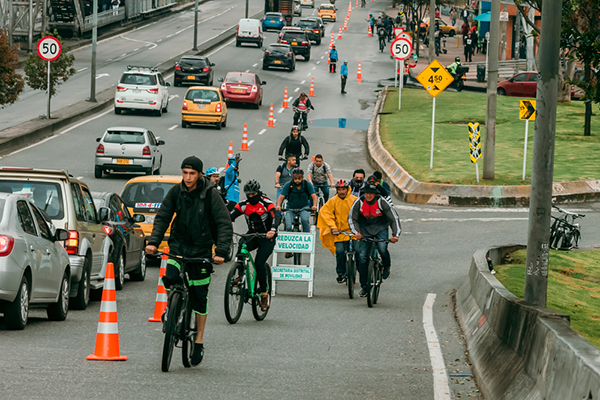COVID-19 / Cycling / Cycling infrastructure / Mobility management / Network planning
Emergency Bike Network in a Week: Quick response to rapidly changing mobility patterns

With cities focusing on managing the impacts of the pandemic, what steps can be taken to support the travel needs of essential services workers that are looking to the bicycle as a reliable transportation tool? An emergency bike network can be the quick response to these new transportation challenges.
Quick action: Emergency Bike Network
Emergency bike networks are proving integral for getting essential staff to get to their workplace safely, creating additional space on strained or non-existent networks for people maintain physical distancing. They also present an opportunity to trial future bike lane roll-out. Under normal conditions, it can take several months – and sometimes years – to develop a bike network, but these times call for quick measures.
To help cities adapt quickly, Mobycon in proposing an approach for developing an emergency bike network that can be implemented in one week. Ready for implementation using quick-build materials. As specialists in bicycle network design, we are equipped to work with our clients to plan, design and build an emergency bike network by selecting the optimal routes for quick construction and provide the highest benefits. In short order, we are ready to help cities take the necessary steps to provide essential service workers the space they need to reach their workplaces safely, comfortably, and by bicycle.
To learn more about how an emergency bike network can help your city to address the current mobility challenges of essential service workers, contact Lennart Nout.
 ">
">Lennart Nout
“The interplay of different modalities within cities intrigues me. I am always looking for the best solution for the city and its inhabitants, while playing close attention to bikes. In the Netherlands and abroad I give workshops on the development of cycling culture, strategic network planning, street design and intersection design.”

